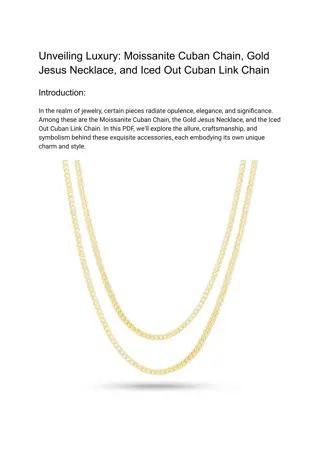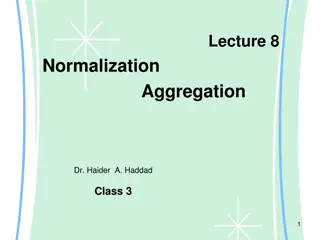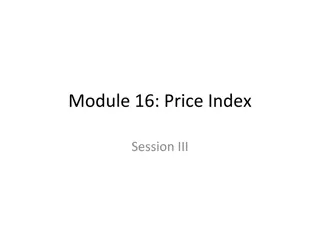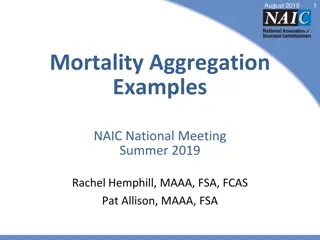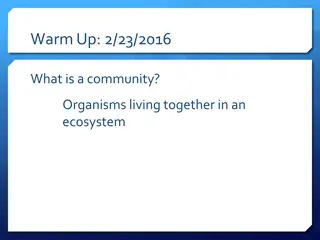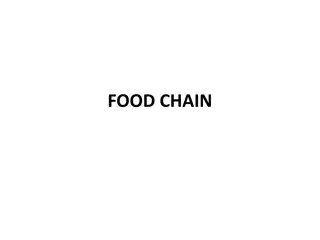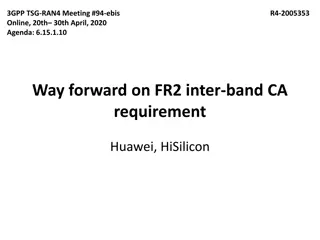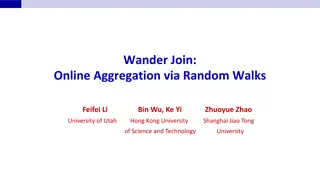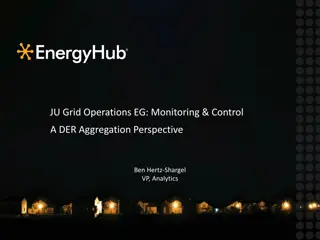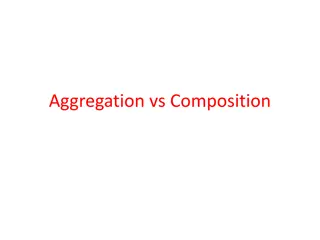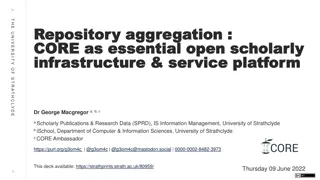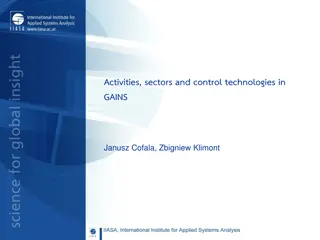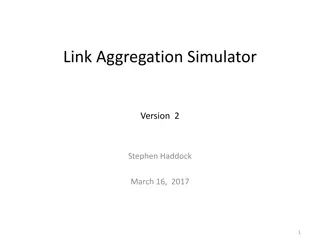Secure Outsourced Aggregation via One-way Chains - Research Overview
Exploring secure outsourced aggregation techniques using one-way chains for wide-area shared sensing and weather monitoring. The unique characteristics, challenges, and solutions for dealing with malicious aggregators are discussed. The research presents the contributions and advancements in optimizing aggregation protocols for improved security and efficiency.
Uploaded on Sep 20, 2024 | 2 Views
Download Presentation

Please find below an Image/Link to download the presentation.
The content on the website is provided AS IS for your information and personal use only. It may not be sold, licensed, or shared on other websites without obtaining consent from the author.If you encounter any issues during the download, it is possible that the publisher has removed the file from their server.
You are allowed to download the files provided on this website for personal or commercial use, subject to the condition that they are used lawfully. All files are the property of their respective owners.
The content on the website is provided AS IS for your information and personal use only. It may not be sold, licensed, or shared on other websites without obtaining consent from the author.
E N D
Presentation Transcript
Secure Outsourced Aggregation via One-way Chains Suman Nath, Microsoft Research Haifeng Yu, National Univ. of Singapore Haowen Chan, Carnegie Mellon University
Wide-area Shared Sensing Weather Underground SensorBase Lets users query sensors through the Web Internet Aggregator Portal Sensors Gateway
Unique Characteristics Diverse queries Min/max, Count/sum/mean, Random Sample, Top-K, Quantiles, Frequent Readings, etc. Push-based data collection Large number of sensors (e.g., >100K in SciScope) Query rate higher than data rate Unlike wireless sensor-nets Outsourced aggregation (e.g., SensorMap, SciScope) Scalability (network load at portal) Network proximity Privacy, economy
Malicious Aggregator A malicious/compromised/lazy aggregator can report incorrect aggregation result Maximum water level: 3ft (Flood warning if level >= 10ft) 3ft Malicious aggregator 10ft 12ft Aggregation service provider Water level 9 10 8 10 11 12 Our goal: enable portal to verify whether and aggregate reported by aggregator is correct
Related Work Outsourced database [Li 06, Narasimha 05, Pang 05] Does not consider aggregation queries SIA [Chan 07] Only one central aggregator; multiple rounds SHIA [Chan 06] Only Count; pull-based model Not suitable for wide- area sensing Proof-sketch [Garofalakis 07] Only Count; aggregators can safely cheat
Our Contribution SECOA: a family of optimally secure aggregation protocols Supports a strict superset of aggregates supported by previous work (e.g., SIA, SHIA, Proof-sketch) Min/max, Count/Sum/Mean, Top-K Readings, Random Sample, Top-K Groups, Frequent Items, Popular Items, etc. Supports a push-based model We use conceptually simple one-way chains We provide optimizations for up to 105x speedup Evaluation with prototype and real dataset
Outline Problem Statement System Model Secure Algorithms Max Beyond Max Evaluation
System Model Internet Aggregates + Verification object Aggregator Portal Sensors Gateway Portal knows the list of sensors Each sensor shares a symmetric key with portal Sensors/portal loosely time synchronized Sensors/Aggregators/Portal can do RSA Sensor readings are integers
Attack Model Byzantine aggregator Can fabricate, replay, duplicate, ignore readings Malicious aggregators can collude Sensors are trusted Fundamentally impossible to prevent Most aggregates we consider are robust against a small number of malicious sensors
Cryptographic Primitive Message Authentication Code (MAC) Integrity and Authenticity of message m Key k Key k MAC Function MAC verifier MAC M Message m MAC M One-way Chain Uses one way function F, e.g., MD5, SHA-1, RSA 3 F3(s)= F(F2(s)) 0 1 2 F1(s)=F(s) F2(s)= F(F1(s)) F0 = s Given F and Fk, one can compute Fi (i>k), but not Fi (i<k) SEAL (Self Authenticating Value) at position k: Fk SEAL folding: Combine multiple SEALs into one Folded SEALs can be verified E.g., XOR of MD5 SEALs, Multiplication of RSA SEALs
Outline Problem Statement System Model Secure Algorithms of SECOA Max Beyond Max Evaluation
Secure Max (Sensor/Aggregator) Water levels Flood warning if max > 4 Aggregator output Value = 5 2 MAC Value = 2 0 1 2 3 4 5 5 One way chain Inflation-free proof 4 MAC Value = 4 2 3 4 5 0 1 Deflation-free proof (Folded SEAL) One way chain 5 MAC Value = 5 0 1 2 3 4 5 One way chain Malicious aggregator can inflate result and report 10 Malicious aggregator can deflate result and report 2
Secure Max (Portal) Aggregator reports (5, MAC, folded SEAL) Portal first checks if the MAC is valid Portal then computes a reference SEAL 0 1 2 3 4 5 2 3 4 5 0 1 Reference folded SEAL 0 1 2 3 4 5 Checks if the reference SEAL = folded SEAL Theorem: the algorithm is optimally secure
Distributed Aggregator Challenge: Roll folded SEALs forward ? Fold at position 5?? Portal Global max: 5 (Folded SEAL At position 5) Folded at position 3 Aggregator Local max: 5 (Folded SEAL at position 5) Local max: 3 (Folded SEAL at position 3) Aggregator Aggregator Sensors Sensors Sensors
Homomorphic Function Requirement 2 3 1 0 1 0 3 2 2 3 1 0 1 0 Rolling folding rolling Rolling folding Necessary and sufficient condition: F(x . y) = F(x) . F(y) and F(x . y) = F(y . x) Homomorphic function Example: F = RSA encryption, = multiplication (More expensive than MD5, but can be made cheaper with clever optimizations)
Outline Problem Statement System Model Secure Algorithms Max Beyond Max Evaluation
Secure Count Adapt Alon-Matias-Szegedy Algorithm Each sensor i picks a random value vi (aka sketch), s.t. x chosen with probability 2-x Max v = Maxi(vi) Est. Count = 2v (increase accuracy with more sketches) Other aggregates: Count Distinct, Sum, Mean Problem: high overhead Example: 100K sensors, 300 sketches 510 million rolling operations, 30 million folding operations A single query: 7 hours for RSA, 9 minutes for MD5
Reducing Rolling Cost Folded Rolling: exploit homomorphism of RSA Aggressively fold Fold 0 1 2 3 4 0 2 3 4 2 3 4 0 1 0 1 0 1 2 3 4 0 At the portal 0 1 2 3 4 0 1 2 3 4 2 3 4 2 0 1 0 1 0 1 2 3 4 At aggregators 0 1 2 3 4
Reducing Folding Cost Portal still needs to fold many sensors per query Sensor1 0 Sensor2 2 3 4 0 1 Sensor3 0 Tree (at portal): Index sensors as a tree (e.g., B-Tree) Logarithmic folding Query
Other Aggregates Top-K Readings Finds K sensors with maximum values One pass solution challenging An aggregator may not know the global top-K Locally produced proofs must be combined globally Top-K Groups Group sensors (based on dynamic properties) and find k groups with maximum values Significantly more complicated than top-k readings Portal does not know grouping, so verification is hard Details in paper
Other Aggregates Uniformly random sample: Top-K Many other statistical aggregates from random sample Most popular items: Top-K Groups Use item name as the group ID, AMS sketch as the group value Items occurring above a threshold: Top-K Groups Use item name as the group ID, AMS sketch as group value, report groups above threshold
Outline Problem Statement System Model Secure Algorithms Max Beyond Max Evaluation
End-to-end Performance Prototyped in SensorMap, using Crypto++ library Dataset: 16,106 stream gauge sensors from USGS 2.5GHz Pentium desktops Query KB/query Computation time (ms/query) Portal Sensor Aggregator Portal Max 0.5 0.84 11.97 1.05 Count 3 35.97 158.9 1.11 Top-10 Readings 1.5 1.09 10.9 1.12 Top-10 Groups 1.6 0.78 8.2 80.9 320KB without in-network aggregation
Effect of Optimizations Computation costs (for Count) At Portal At Aggregator Additional results in the paper
Conclusion SECOA: a framework for outsourced aggregation Supports a large number of diverse queries Supports push-based model Optimally secure Supports hierarchical aggregators Has small computation/communication overhead Future work: design a system without a centralized portal
Distributed Aggregator Challenge: Roll folded SEALs forward ? Fold at position 5?? Portal max: 5 Folded at position 3 Aggregator max: 5 max: 3 5 2 3 Aggregator Aggregator Sensors Sensors Sensors
One-pass Top-K Solution: i th top value has SEAL over all sensors excluding top i-1 values 80 80 F80 F61 61 75 12 10 F12 61 26 20 F80 F75 F61 75 18 F75 F26 26 12 20 10 F20 18 Optimally secure Cost proportional to the top value and independent of k
Top-K Readings Challenge for a one-pass algorithm An aggregator may not know the globally top-k items Locally produced SEALs must be combined Solutions in the paper
Top-K Groups 6 1 3 6 5 4 2 2 4 7 3 1 5 Significantly more difficult that Top-K Readings 2nd Top value should exclude all items in the top group The portal may not know the group membership! Solution in the paper


